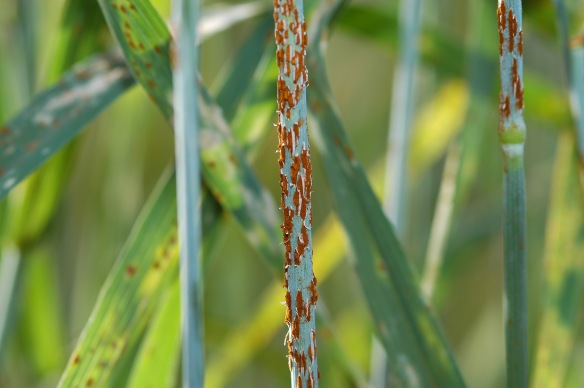Argentina is one of the countries with the largest wheat-growing area in the world with more than 5 million hectares spread all over the country.
The grain production region has experienced severe tillage changes in the past twenty years, mostly due to the increased interest in maintaining soils covered with plant residues.
No tillage can reduce costs by decreasing fuel consumption required to produce a crop. However, in the wheat/soybean system under no tillage, as in wheat following wheat, the inoculum of fungi may survive until the next wheat season. Therefore, the use of fungicides is essential to decrease the severity of diseases.
Fungicides are usually applied on foliage to control diseases but they are also used for seed treatments to prevent seed decay. Leaf rust, septoria leaf blotch, and tan spot are the most important diseases in terms of potential yield reduction in Argentina.
“Planting resistant cultivars is one of the least expensive and most effective management strategies to prevent diseases. However, cultivars with an adequate genetic resistance level to necrotroph foliar diseases are scarce, and usually resistance to leaf rust is complete, conditioned by one or a few genes and has a low level of durability in Argentina. Therefore, chemical protection together with cultural practices is a common method of control. In addition, fungicides are also important because Argentinian wheat region combine high yield potential cultivars with high infection pressure, both deriving from adequate temperature and moisture levels, large application of N fertilizers and rotations dominated by cereals, which promote progression of some foliar diseases.
The results of experiments carried out in Argentina indicate that sowing wheat following wheat in no tillage is possible without significant yield losses if effective disease management practices including moderately resistant cultivars, N fertilization and fungicides are applied.”
Authors: Simon, M. R., et al.
Affiliation: National University of La Plata, Argentina.
Title: Recent Advances on Integrated Foliar Disease Management with Special Emphasis in Argentina Wheat Production.
Source: InTech. Fungicides – Showcases of Integrated Plant Disease Management from Around the World. Available at: http://www.intechopen.com/books/fungicides-showcases-of-integrated-plant-disease-management-from-around-the-world

